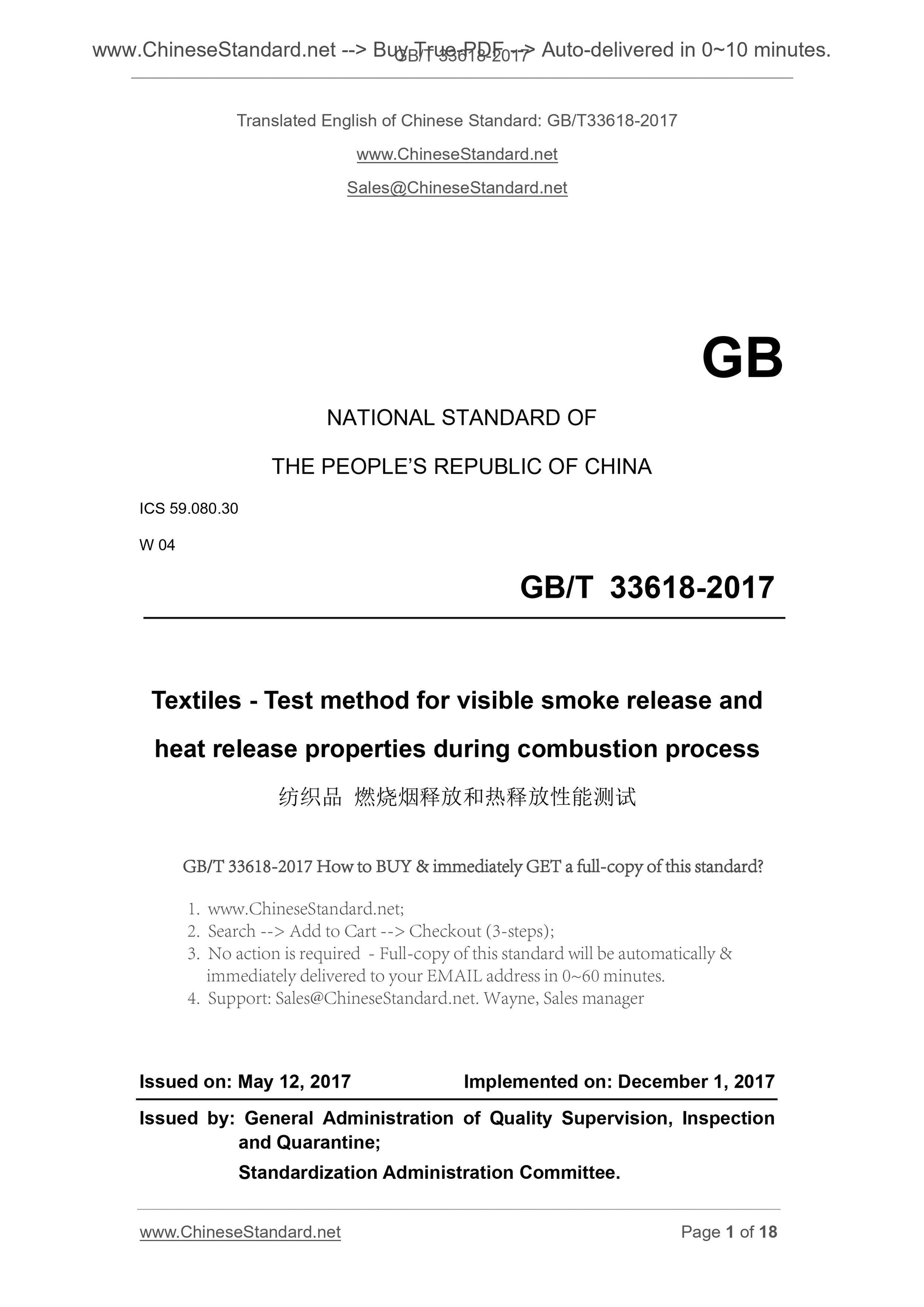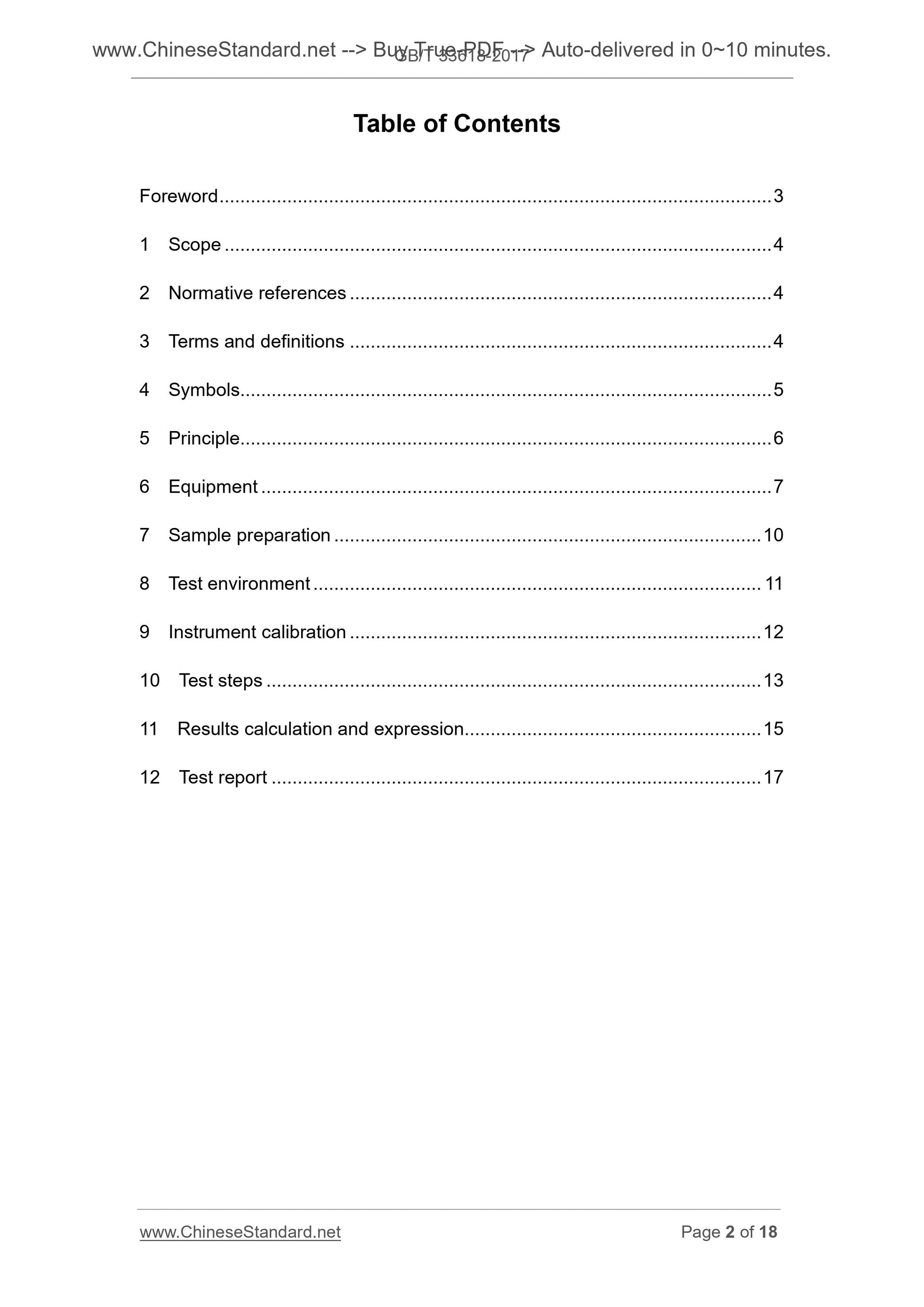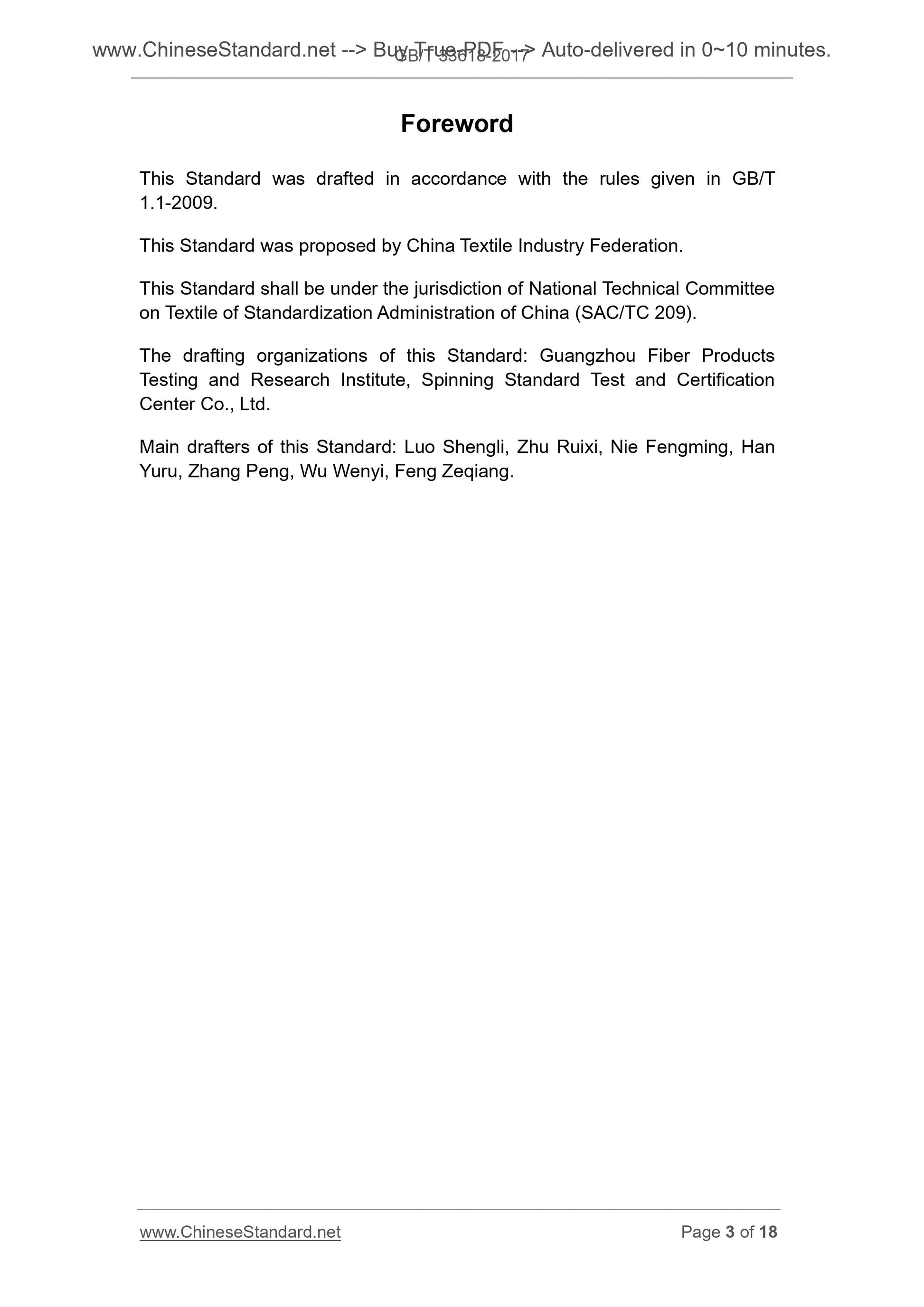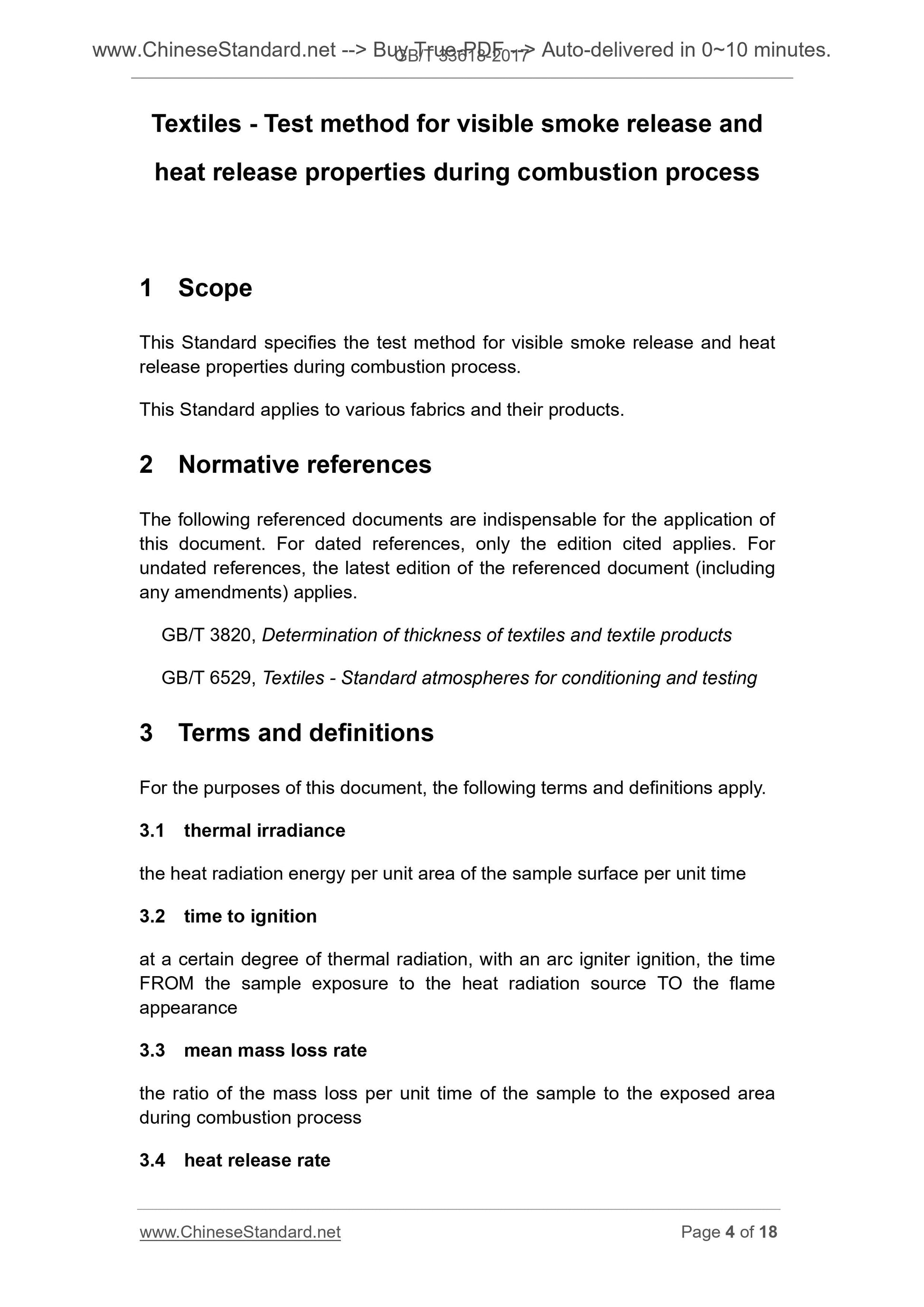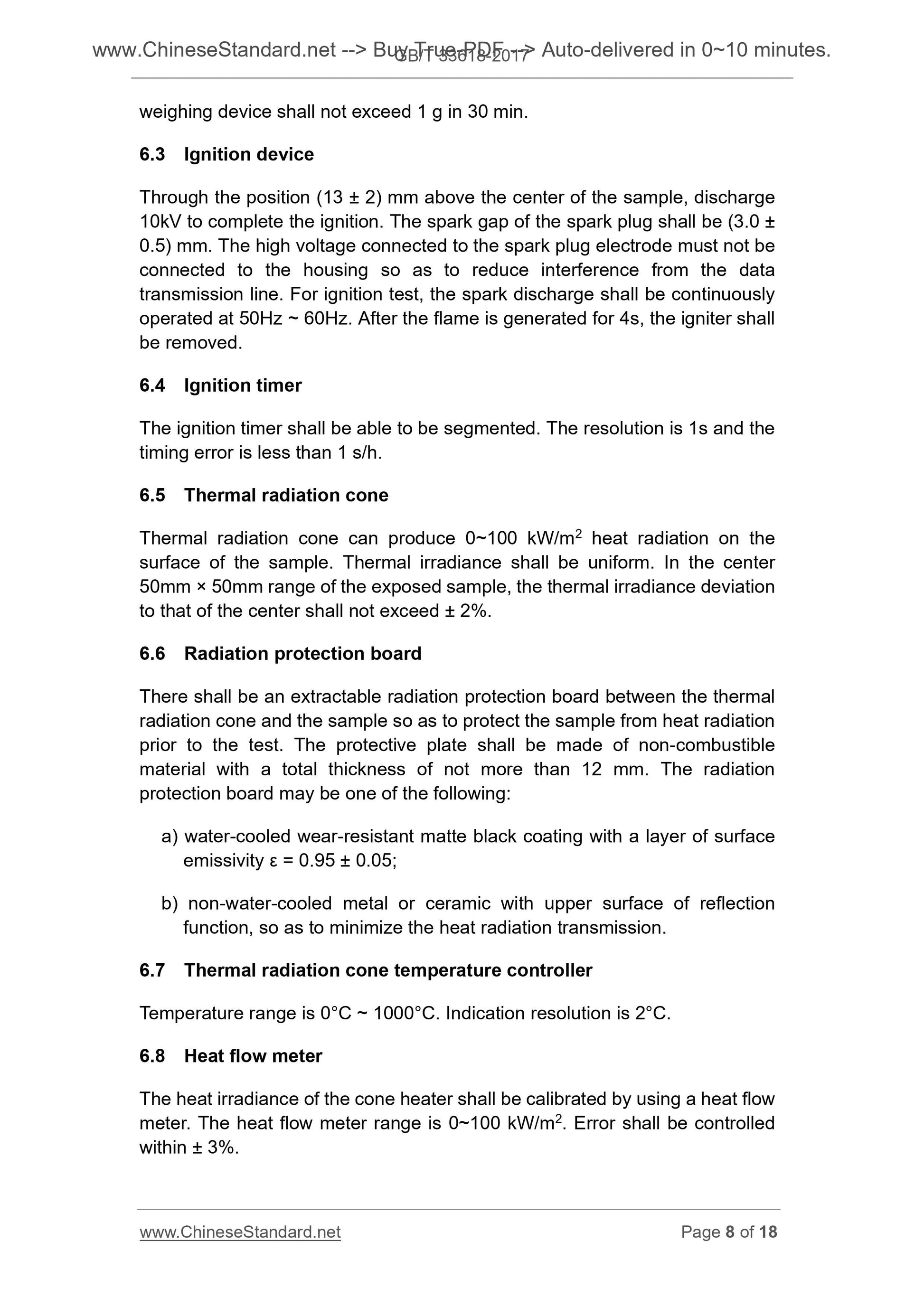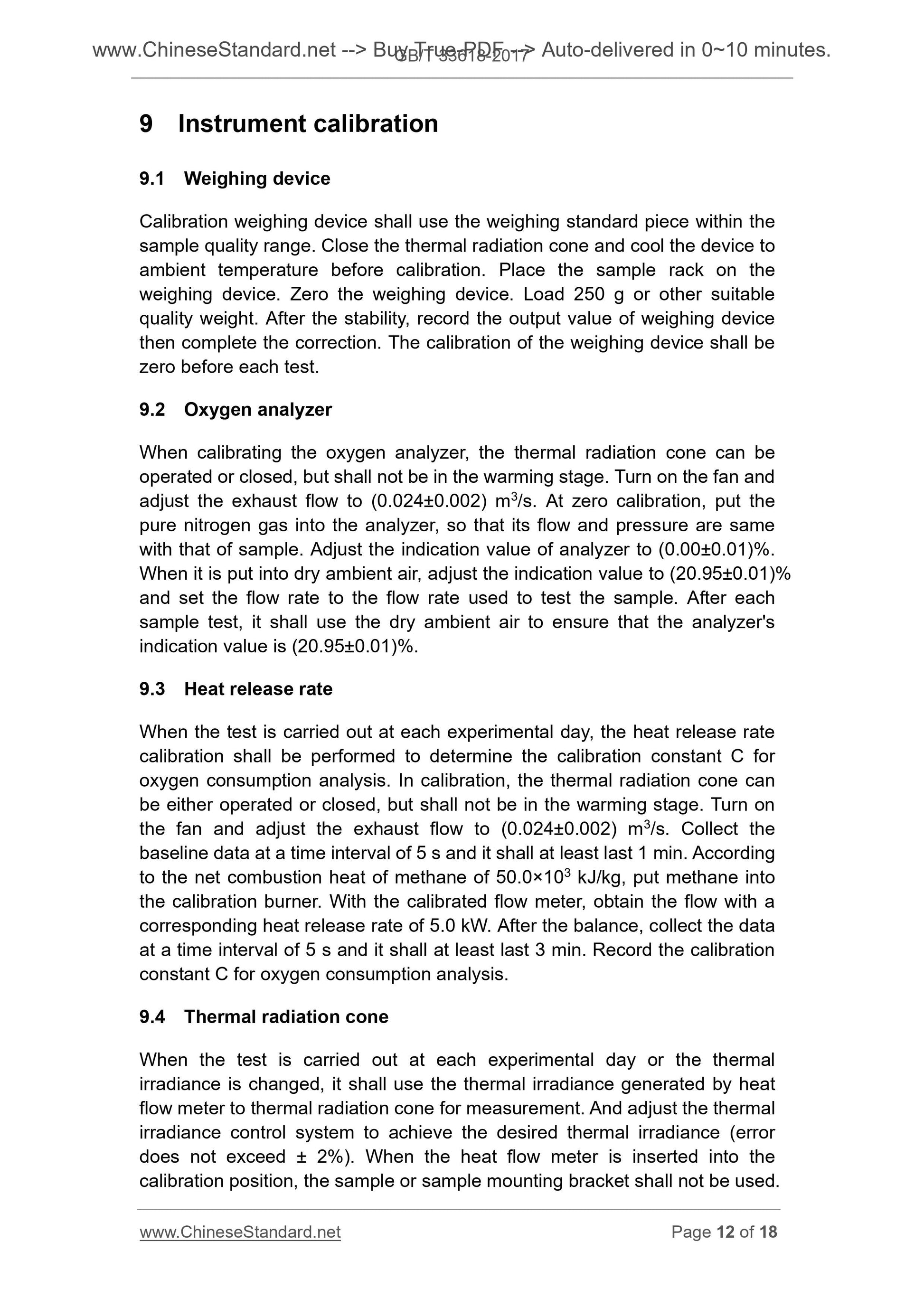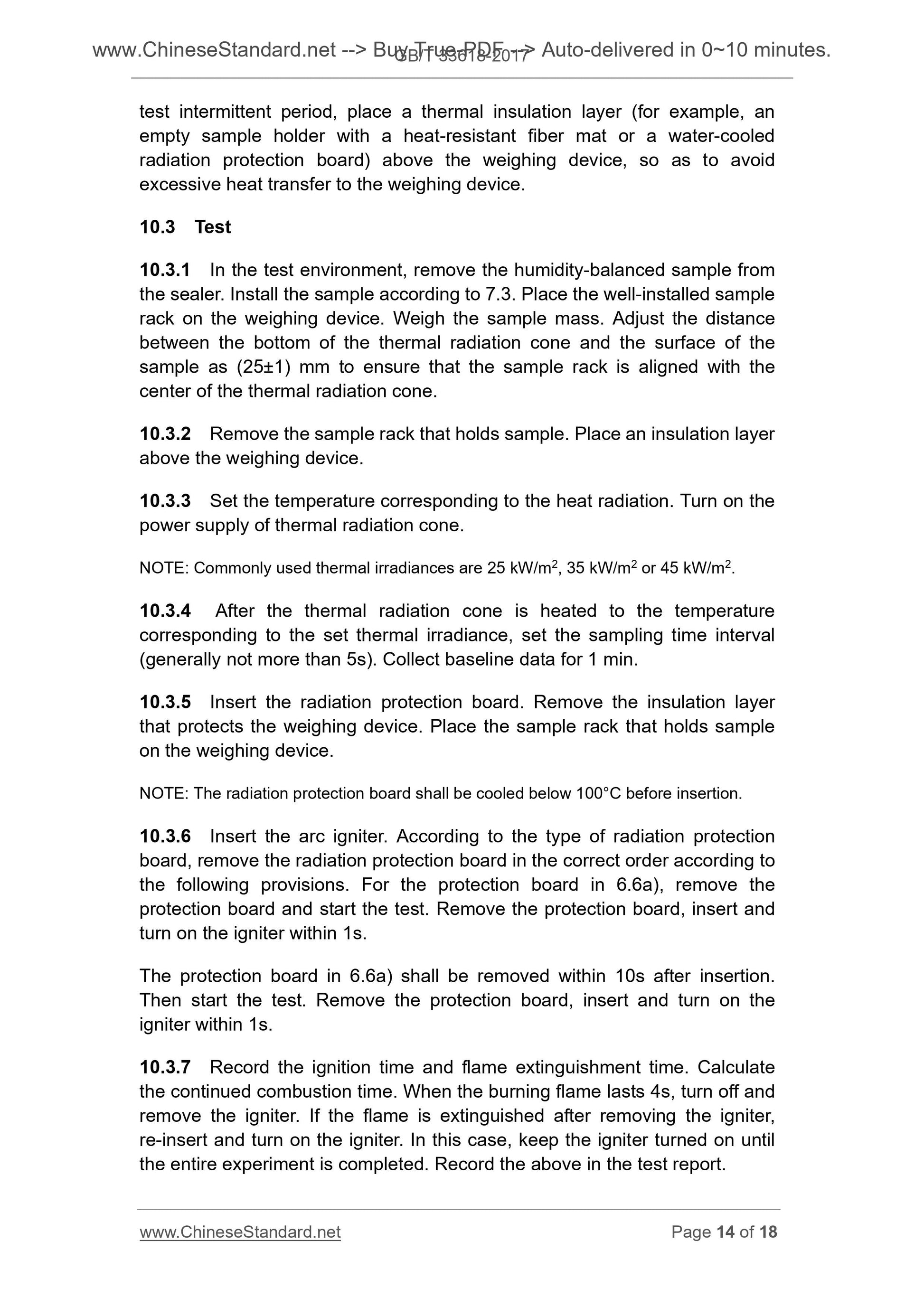1
/
of
7
www.ChineseStandard.us -- Field Test Asia Pte. Ltd.
GB/T 33618-2017 English PDF (GB/T33618-2017)
GB/T 33618-2017 English PDF (GB/T33618-2017)
Regular price
$150.00
Regular price
Sale price
$150.00
Unit price
/
per
Shipping calculated at checkout.
Couldn't load pickup availability
GB/T 33618-2017: Textiles - Test method for visible smoke release and heat release properties during combustion process
Delivery: 9 seconds. Download (and Email) true-PDF + Invoice.Get Quotation: Click GB/T 33618-2017 (Self-service in 1-minute)
Newer / historical versions: GB/T 33618-2017
Preview True-PDF
Scope
This Standard specifies the test method for visible smoke release and heatrelease properties during combustion process.
This Standard applies to various fabrics and their products.
Basic Data
| Standard ID | GB/T 33618-2017 (GB/T33618-2017) |
| Description (Translated English) | Textiles - Test method for visible smoke release and heat release properties during combustion process |
| Sector / Industry | National Standard (Recommended) |
| Classification of Chinese Standard | W04 |
| Classification of International Standard | 59.080.30 |
| Word Count Estimation | 12,113 |
| Date of Issue | 2017-05-12 |
| Date of Implementation | 2017-12-01 |
| Quoted Standard | GB/T 3820; GB/T 6529 |
| Issuing agency(ies) | General Administration of Quality Supervision, Inspection and Quarantine of the People's Republic of China, Standardization Administration of the People's Republic of China |
| Summary | This standard specifies the test method for the release and thermal release properties of textiles burning smoke. This standard applies to a variety of fabrics and their products. |
Share







